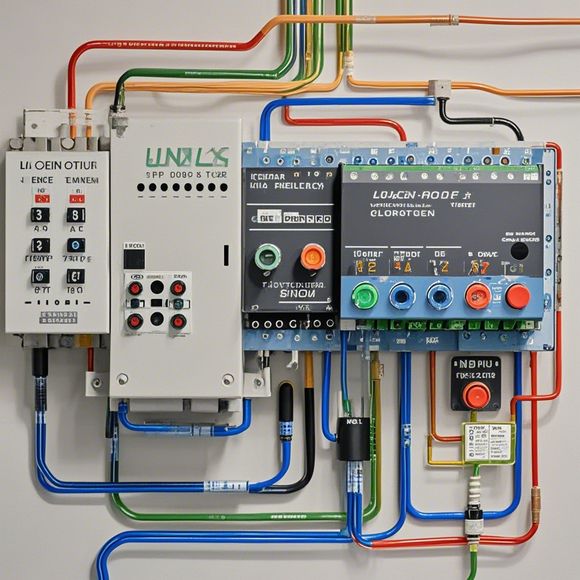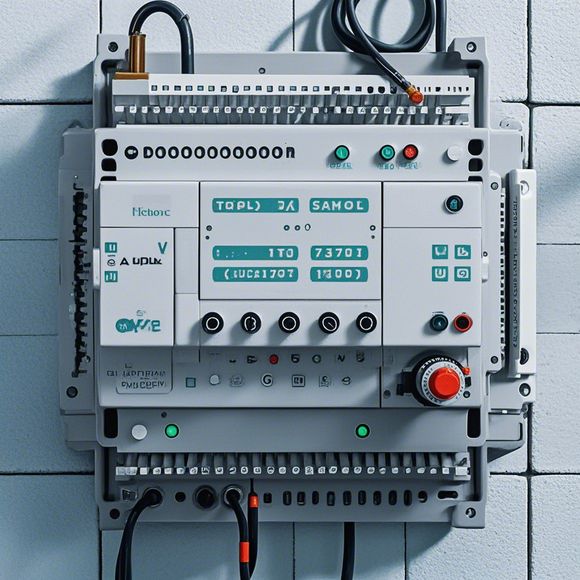PLC Controllers - Understanding the Basics of Programming and Operation
PLC Controllers are essential for controlling industrial processes, from simple machines to complex factories. Here's a brief overview of the basics of programming and operation:First, let's start with the basics. PLC controllers are computer-controlled devices that manage industrial processes like heating, cooling, and lighting. These systems use programmable logic controller software to control various functions, such as turning on lights or switching off fans in response to specific inputs.When programming an PLC, you need to define the inputs and outputs of your system, along with the desired actions when they change. You can do this using a variety of programming languages, such as ladder diagrams or function blocks. The software then translates these instructions into commands that your hardware can understand.Once you have your program written, you need to configure it for your particular application. This involves setting the correct parameters for temperature, pressure, flow rate, etc., based on the needs of your process.Finally, once everything is set up, you can test the system to make sure it's working correctly before putting it into production. This step is important because any mistakes can lead to costly downtime and lost productivity.
In today's world, the importance of industrial automation cannot be understated. Among the many components that contribute to this progress are Programmable Logic Controllers (PLCs). These devices serve as a vital link between human input and industrial machinery, allowing for efficient and precise control of processes. If you're looking to understand the basic principles behind PLC controller operation, here's an overview:

Introduction to PLCs
A PLC, also known as Programmable Logic Controller, is a device that allows users to program logic in order to automate various industrial processes. This programming is done through a series of commands and algorithms that are written into the controller's memory. When the user inputs these commands, the PLC executes them according to the instructions programmed into its memory. The result is a system where the output of the process can be controlled and regulated with precision and reliability.
What Are the Key Features of PLCs?
One of the most significant features of PLCs is their ability to work with different types of input devices, including sensors, switches, and actuators. These devices provide data about the state of the system, which the PLC then interprets to make decisions on how to manipulate the process. Additionally, some PLCs come equipped with communication capabilities, enabling them to connect to other systems within an industrial network. This means that they can communicate with each other, share data, and coordinate actions across multiple machines.
Programming a PLC
To program a PLC effectively, one must first familiarize themselves with the language used by the manufacturer. For example, many PLCs use ladder logic diagrams or structured text, but others may use high-level languages like Assembly Language or C. Once the programming language has been chosen, the user must create a program that includes the logic required to perform the desired task. This program is written using the commands and functions specified in the PLC's documentation. It is important to note that while certain PLCs allow for simple scripting or direct writing of code, more complex tasks often require more advanced programming techniques.

Maintenance and Troubleshooting
Once the PLC controller has been programmed and connected to the industrial equipment it is meant to control, it is crucial to keep it up to date with regular maintenance. This includes checking for any physical damage or wear and tear, ensuring that all connections are secure, and testing the system for proper functionality. Additionally, if issues arise during operation, it is important to have knowledge of common problems and solutions to quickly identify and address them. This may include troubleshooting software errors, hardware failures, or communication issues.
Conclusion
In conclusion, understanding the basic principles behind PLC controller operation is essential for anyone working in industrial automation. By learning about how PLCs interact with input devices and perform specific tasks, users can design and manage systems more effectively, leading to increased efficiency and productivity. With proper programming and regular maintenance, PLCs can become valuable assets in any manufacturing setting, allowing for precise and automated control over industrial processes.
Content expansion reading:
Articles related to the knowledge points of this article:
Smart Manufacturing Solutions with PLC Integrated Machinery
PLC (Programmable Logic Controller) Control System Basics
PLC Controllers: A Comprehensive Guide to Understanding Their Prices